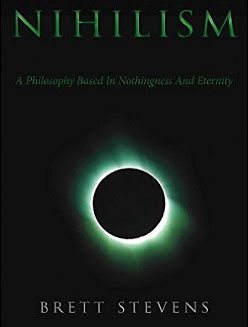How The “Greatest Generation” Destroyed My Future
Every generation is like being on a giant cruise ship. You arrive on the ship at the same time, it leaves port, and then a relatively small group at the front defines how the world sees your generation by doing outrageous stunts and stupid stuff that makes it easy to characterize you.
To make this clearer, most Baby Boomers were not hippies, although it seems like more were liberal than not. Most Millennials are not useless Python and Ruby coders making bloated ineffectual apps. Most Zoomers are not mixed-race zombies eating avocado toast during Zoom meetings for their social media promotion jobs.
And yet, this is how those generations will be known. Before them came the “Greatest Generation” comprised of people who fought in the second world war or at least lived through it. They were tough, possibly more deviant from traditional morality than has been widely reported, and aggressively me-first.
They also voted for JFK and LBJ, who set up a socialist-style system in America. This is not surprising; after the anarchist attacks of the turn of the century and the disaster of WW1, most people had concluded that our system was bad and “scientific” socialism was the future.
Once the war was over, they settled into those old prejudices and began voting for civil rights and the entitlements state, convincing themselves that they could reproduce the FDR miracle — which was in fact the opposite — through Keynesian stimulus spending necessitated by free stuff from government justified by civil rights.
In their view, WW2 had ended the debate over human governments, and the future belonged to liberal democracy with civil rights and a socialist entitlements state. This hybrid of previous political systems seemed to tick all the boxes and be more stable than the alternatives.
Since the postwar wealth boom went straight to their investment accounts, the Greatest Generation did not look back and was able to maintain its faith all the way through the 0bama years. However, it turns out that inflation is a consequence of government stimulus that devalues currency:
In terms of real purchasing power, American workers are still losing ground.
Eventually, people will realize that prices went up, and that their raises were illusory. At that point they will start getting mad. This is what happened in the 1970s, when a decade of high inflation coincided with — and possibly caused — real wage losses for the average American worker.
Humorously, every time the voters approve of a new lunatic to adopt massive social policies, the result is economic paralysis for two reasons.
First government giveaways become the new baseline of wealth. If there is no welfare or benefits, the baseline is zero, but once every citizen can be assumed to be availing themselves of these policies, companies pay less because government is paying that initial part of its workers’ income.
Second stimulus spending creates costs that are passed on to the consumer. Wages go up, then prices go up, and then all those taxes and regulatory costs are passed on to the consumer directly, so prices go up further. The worker has a higher amount of dollars but they buy less.
The massive federal stimulus programs — under Lincoln, FDR, JFK, LBJ, and 0bama — each produced what you would expect from a failing socialist-style program: a short-term boost (like “hybrid vigor”) followed by a long-term malaise as the economy tries to do more with a currency that is worth less.
Ignore the ranting internet idiots talking about “ending the fed.” This is a distraction to keep you from noticing that the real source of your problems is the free stuff from government: school lunches, subsidized HUD housing, welfare systems, EMTALA and subsidized healthcare, education grants, and social security.
The more free stuff you get, the more everything else costs more. This benefits those who have enough money to be immune to taxes; these people generally have investment portfolios. Everyone else gets viciously screwed by the rise in prices, which in turn causes them to do a work slowdown much like happened in the Soviet Union.
We are still suffering under the 1960s inflation caused by socialized programs from JFK, LBJ, and Nixon:
After adjusting for inflation, however, today’s average hourly wage has just about the same purchasing power it did in 1978, following a long slide in the 1980s and early 1990s and bumpy, inconsistent growth since then. In fact, in real terms average hourly earnings peaked more than 45 years ago: The $4.03-an-hour rate recorded in January 1973 had the same purchasing power that $23.68 would today.
A similar measure — the “usual weekly earnings” of employed, full-time wage and salary workers — tells much the same story, albeit over a shorter time period. In seasonally adjusted current dollars, median usual weekly earnings rose from $232 in the first quarter of 1979 (when the data series began) to $879 in the second quarter of this year, which might sound like a lot. But in real, inflation-adjusted terms, the median has barely budged over that period: That $232 in 1979 had the same purchasing power as $840 in today’s dollars.
Just as Communism made its victim-nations impoverished, socialism lite does the same in the West: the more free stuff, the higher the prices go, the rich get richer, and the poor have less buying power even if technically they are less poor because they possess a higher number of monetary units.
The era after the 1960s has been plagued by constant inflation. Prices always go up, and wages lag behind, so somehow the average person never gets ahead. Declining quality of goods and services now mean that while people have big-screen televisions and air conditioners, their daily experience is impoverished relative to that a century ago.
Some have noticed that stimulus inflation from recent government programs has caused our current economic stall:
Cochrane argues that higher inflation resulted from the federal government pouring trillions of dollars in stimulus spending into the economy during the pandemic. To prevent future inflation shocks, he says U.S. policymakers must target taxes, spending, and growth and stop relying on rate-setting alone to keep the economy in check. “The Fed is a lot less powerful than people think,” he says.
The government essentially sent people $5 trillion with no plans to pay the money back. People tried to spend it, driving up prices. The Fed eventually raising interest rates made inflation come down a bit faster than it would have otherwise, but it was going to go away on its own anyway. There is no magic momentum to inflation. Stop pushing, and it stops.
I should clarify in all this: debt and deficits alone do not cause inflation. Governments often borrow, spend, and don’t produce inflation because they have credible plans to pay back the debt.
We are becalmed economically because handing out free money creates higher demand. Demand-based economies, favored by the Left, see this as desirable, but it produces a short-term boost and a long-term slow crash. The boom-bust cycle of modern economies is not “capitalism” but market distortions created by governments.
When measured over time, it becomes clear that inflation is driven by stimulus spending, not interest rates:
* 42% of inflation could be attributed to government spending.
* 17% could be attributed to inflation expectations — that is, the rate at which consumers expect prices to continue to increase.
* 14% could be blamed on high interest rates.
Interest rates are how the government tries to limit the boom-bust cycle caused by demand-based economies. When they distribute too much money, they raise interest rates to slow the borrowing of money, but this has a paralytic effect on the economy as well.
It turns out that viewing inflation as devaluation by “cheapening” money — such as giving it away free — makes more sense that viewing it as excessive demand:
Inflation can also be thought of as the devaluation of money. It can be a concern because it makes money saved in the present less valuable in the future. Inflation erodes both purchasing power and the value of investments. For example, if an investor earned 5% from investments in stocks and bonds, but the inflation rate was 3%, the investor only earned 2% in real terms.
Monetarists understand inflation to be caused by too many dollars chasing too few goods. In other words, the supply of money has grown too large. According to this theory, money’s value is subject to the law of supply and demand, just like any other good in the market. As the supply grows, the value goes down. If the value of money goes down, its purchasing power drops and things become relatively more expensive.
As the supply of money grows, the value of each unit declines, mainly because money is a representation of the value of the economy that issues it.
When that economy increases the amount of money in circulation by giving out free money, especially based on borrowing, the purchasing power of each unit declines.
The Keynesians believed in “pump priming” through stimulus spending to power the economy through downturns:
In Keynesian theory, when a recession happens, the economy can get stuck with sustained high unemployment and a stagnant GDP for an extended period due to a deficiency of aggregate demand. When consumers and businesses buy less stuff, businesses lose sales and fire workers, those workers buy less, and the cycle continues in a self-sustaining manner.1
According to the Keynesians, one option to deal with this situation is for the government to directly make up for the lack of private sector demand by replacing it with demand from the public sector financed by deficit spending. In the broadest sense, this spending can really be on anything.
However, that same stimulus spending creates the next cycle of bust. Like with most modern things, our “solutions” create our “problems.”
Consumers also respond to stimulus by freezing spending which we also saw during the COVID-19 era:
Economists have argued that consumers and businesses adjust their behavior in ways that offset the stimulus policy. The response to the stimulus will not be a simple multiplier effect but will also include these offsetting behaviors.
One such theory is Ricardian equivalence, named for David Ricardo’s work dating back to the early 1800s, which suggests that consumers internalize government spending decisions in a way that counterbalances stimulus measures. In other words, Ricardo argued that consumers will spend less today if they believe they will pay higher future taxes to cover government deficits.
If you wonder why the Biden economy resembles the Carter economy, consider that not only did Biden enact one of the biggest stimulus spending programs in history, but he also created stealth stimulus by writing regulations at a rapid rate, forcing companies to upgrade equipment and hire new people to stay compliant.
This doubly damages the currency through the effects of both stimulus and regulatory costs which are paid by businesses and then added to their prices, which means that consumers finance the regulatory schemes after the first cycle.
We see a pattern in bad human programs: they always give a little burst of growth, then settle into malaise, because they amount to manipulating others into subsidizing social problems, which is noticed during the little burst and then wages, prices, and spending adjust to that reality, producing the malaise.
The Biden spending spree created a Carter-style slow economy where few people spend money to update anything and so the country becomes shabby, cheap, mean, and generally demoralized:
A recent analysis from the Federal Reserve Bank of San Francisco, called “Why Is U.S. Inflation Higher than in Other Countries?,” makes the case that the stimulus played a major part in the rise of inflation.
“Since the first half of 2021, U.S. inflation has increasingly outpaced inflation in other developed countries,” the analysis says. “Estimates suggest that fiscal support measures designed to counteract the severity of the pandemic’s economic effect may have contributed to this divergence by raising inflation about 3 percentage points by the end of 2021.”
The study did note that the economy “has rebounded at an astonishing rate,” and that the effects of the pandemic on the economy are complicated. But it did find that the “direct fiscal transfers” in the United States were much larger than those abroad.
If you think of the pictures of people living in ugly tenements and wearing ill-fitting clothing while waiting in line for food in the Soviet Union, you are on the right course. Free stuff produces expensive lives. In response, producers cut quality and service, resulting in industrialized third world style poverty.
In the West, both stimulus spending and regulations use private wealth to achieve government objectives, sort of like eminent domain abuse:
The crowding-out theory rests on the assumption that government spending must ultimately be funded by the private sector, either through increased taxation or financing. Therefore, government spending effectively uses up private resources, and it becomes a cost that has to be weighed against the possible benefits derived from it.
The Greatest Generation kicked off all of these programs after WW2. The largest area of increase in government spending during this time was entitlements, or subsidy payments that go directly to citizens, and it has kept rising because once these programs are in place, they expand and cost more, yet the voters do not have the will to repeal them.
After all, it is hard to explain to someone that you are taking away his free stuff that he can have right now so that his grandkids can experience higher quality lifestyles for lower prices. No: he wants his social security, medicare/medicaid, obamacare, welfare, public schooling, and subsidizing housing right now.
Consequently these programs stay, grow, bloat, and consume the economy. While we would like to blame the hippie Boomers, the Greatest Generation kicked off these programs in the 1930s that gained momentum in the 1960s, 1990s, and early 2000s, and now your future is impoverished because of them.
Tags: entitlements, greatest generation, john maynard keynes, keynesian circular ponzi scheme, keynesianism, stimulus, stimulus spending, taxes










